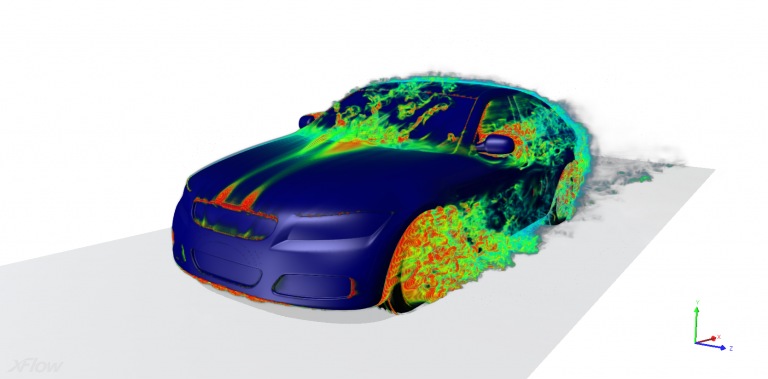Quote:
Originally Posted by rob.e

I'm not saying these guys are wrong, i'm sure there is a whole bunch of work to come up with this set up but not sure if i understand the logic?
Any one care to comment?
|
Look at as many CFD images of street cars that you can.
There is a typical pattern of the front wheels generating more drag than the rear wheels - on most cars. I'm sure that you will find an exception or two, but look for a majority pattern.
https://www.simuleon.com/event/intro...-to-xflow-cfd/
 EDIT:
EDIT:
Photobucket has blurred out the CFD of my Pick Up truck, but you can still see more drag on the front wheels.
Pickup Truck Aerodynamics - CFD Study Chevy S10
https://ecomodder.com/forum/showthre...s10-35043.html

As to the cause of this phenomena, I'd wager to say there is more upset air at the front of the car as the pressure and air velocity first attempt to stabilize. Just more of a party going on up front.
Keep in mind that high pressure up front means low air velocity, and high air velocity means lower air pressure. This is not very intuitive, Mr Bernoulli got it right though.
Bernoulli's principle
https://en.wikipedia.org/wiki/Bernoulli%27s_principle
Quote:
|
In fluid dynamics, Bernoulli's principle states that an increase in the speed of a fluid occurs simultaneously with a decrease in pressure or a decrease in the fluid's potential energy.
|
So now we want to ask if it's the pressure causing the drag or the air velocity.
This is what NASA has to say.
What is Drag?
https://www.grc.nasa.gov/www/k-12/airplane/drag1.html
Quote:
|
Drag is generated by the difference in velocity between the solid object and the fluid.
|
So it's Velocity and not Pressure that causes drag.
Can we conclude that there is more velocity at one corner of the vehicle verses the opposite corner, or will they be equal?
Do we look at pressure CFD illustrations or velocity CFD illustrations or both?
Like I said, I think one needs to keep in mind that the front wheels pivot and the rear wheels do not, and maybe just leave it at that.